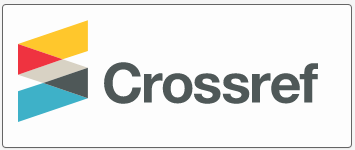Perspectives on the implementation of differentiated teaching (on the example of teaching mathematics at the elementary level)
DOI:
https://doi.org/10.52340/idw.2021.542Keywords:
Differentiated teaching, student readiness, effective teaching of mathematics, subject of differentiation, curriculum componentsAbstract
Student-centered learning is unimaginable without the implementation of differentiated approaches. We can find out a number of publications and articles about this subject. The American professor Carol Ann Tomlinson has quite important articles on differentiated teaching from contemporaries. In his work, Tomlinson discusses in detail and in depth the essence of differentiated teaching as one of the effective approaches and the principles of its implementation. However, a number of issues (why is differentiated learning so important and relevant? What makes it relevant?) Still require a good understanding in order to successfully implement this approach when teaching a particular subject. These issues are discussed in the article on the example of teaching elementary school mathematics and clarifies the perspectives of using a differentiated approach in these areas. Differentiated learning is fully suited to student-centered learning, as it implements a learning process focused on the needs, skills and abilities of each student (group of students). According to Tomlinson, differentiated learning is constructed and implemented to take into account the readiness, interests and learning profile of students to create optimal conditions for development for each of them. This is one of the best ways to implement an individual approach to students.Providing a learning process tailored to the needs of the students and teacher feedback on the needs of the students include teacher activities in a number of areas. Tonlimson and Mooney consider new opportunities for students, a sense of partnership, expectations, and training for quality learning significantly; Which contributes to class success and student growth. The condition for facilitating is the active involvement of students in the learning process, their cooperation;The essence of the issue is clarified in the article on the example of a mathematics course, how we can apply this approach in the teaching-learning process and why it is extremely valuable to implement differentiated teaching from the elementary level. This need is explained in relation to the specifics of teaching mathematics as a school subject. The "technology" of differentiated teaching, the essence of differentiation based on student readiness, as well as what the subject of differentiation includes are discussed in detail. Differentiation of each component according to the individual components of the curriculum (content, process, product) is discussed with specific examples. With the help of different types of tasks it is possible to use the possibilities and perspectives of differentiation in teaching mathematics at the elementary level. Some recommendations in this regard are offered. The issue discussed in the article concludes that the purposeful use of differentiation from the elementary level gives a great chance for the multifaceted development of students, which is accompanied by the results of successful teaching in mathematics.
Downloads
References
მათემატიკის სწავლების ინოვაციური მეთოდები, (2016), USAID, GPRIED, თბილისი
Tomlinson, C,. & Moon, T. (2013) Assessment and . Student Success in a Differentiated Classroom. Alexandria, VA:ASCD, USA
Tomlinson, C,. (1999) The differentiated classroom : responding to the needs of all learners. Alexandria, VA:ASCD, USA







